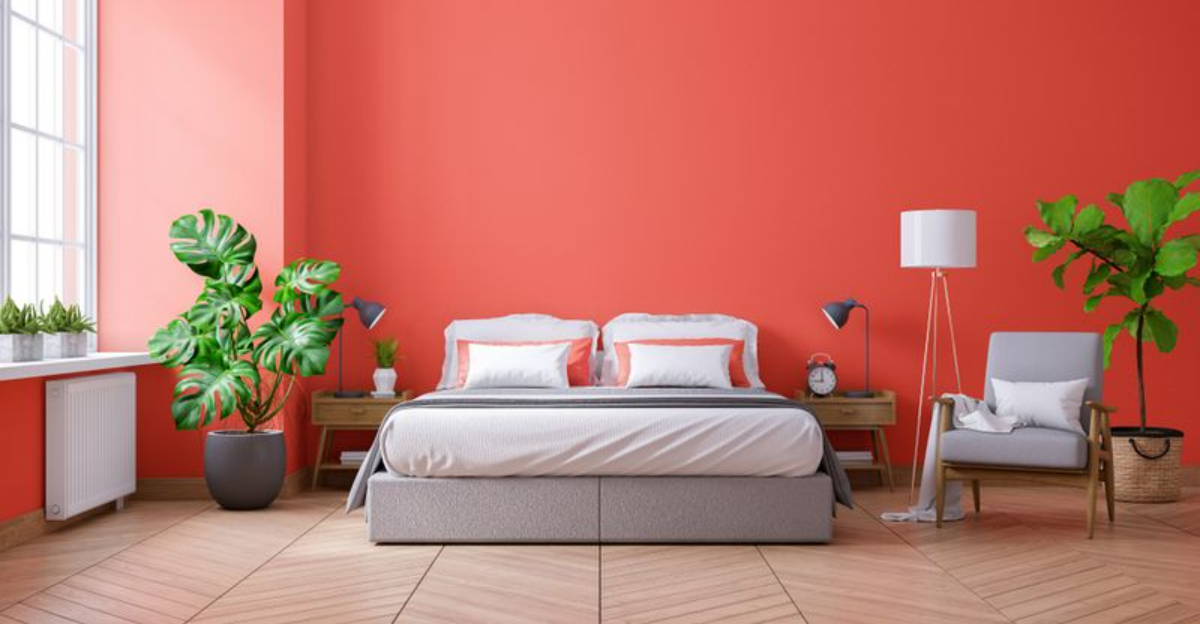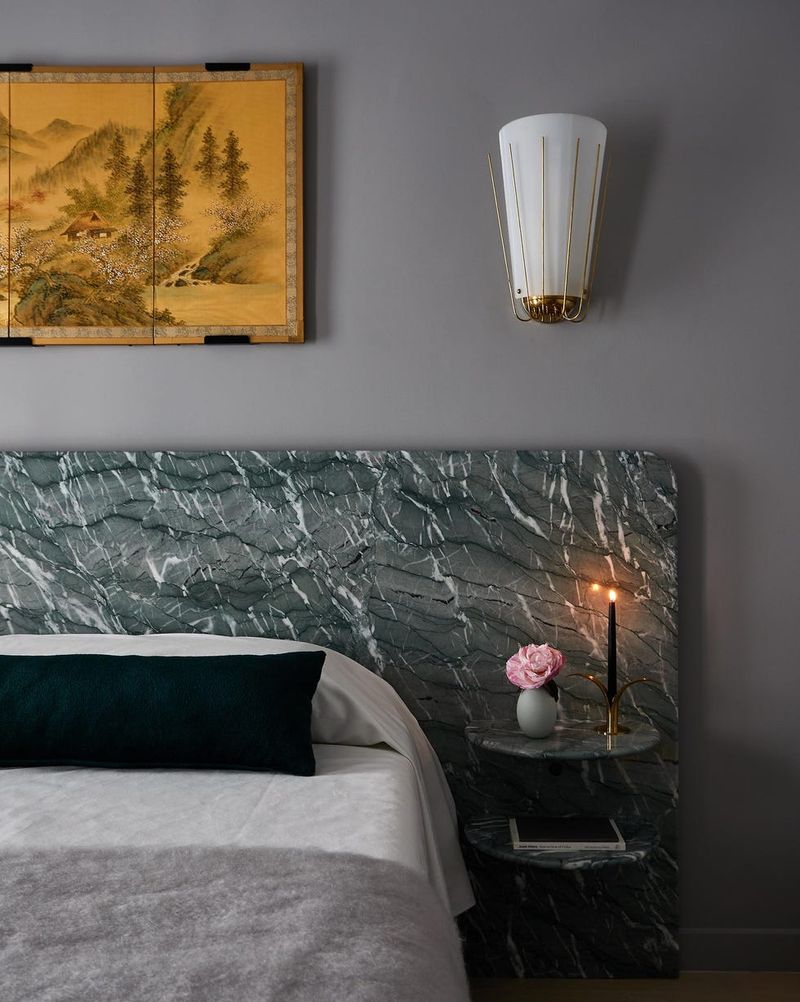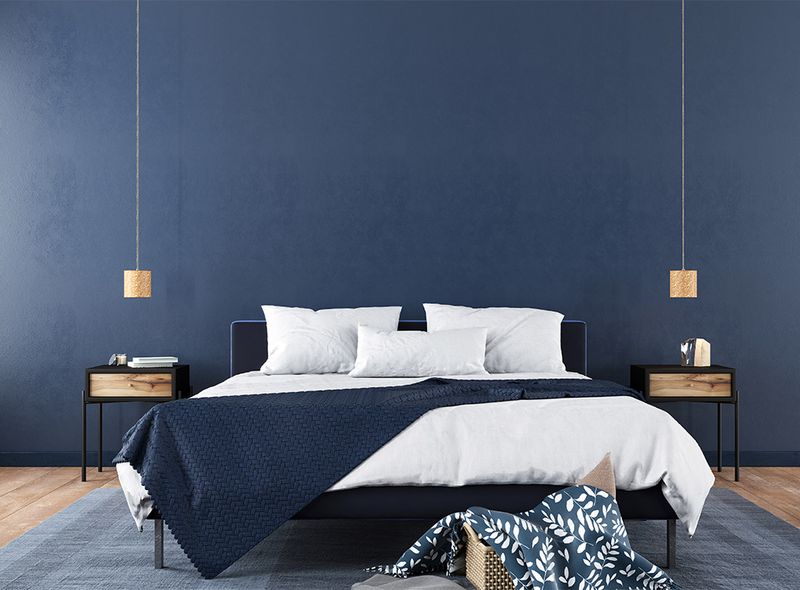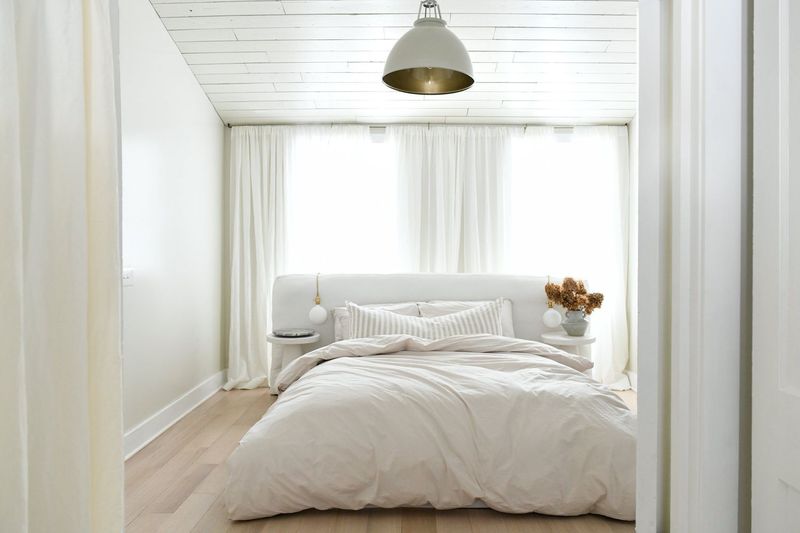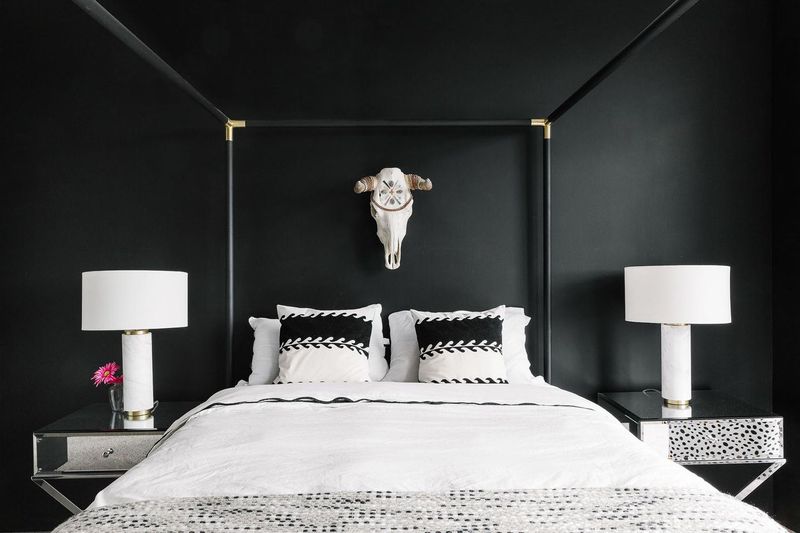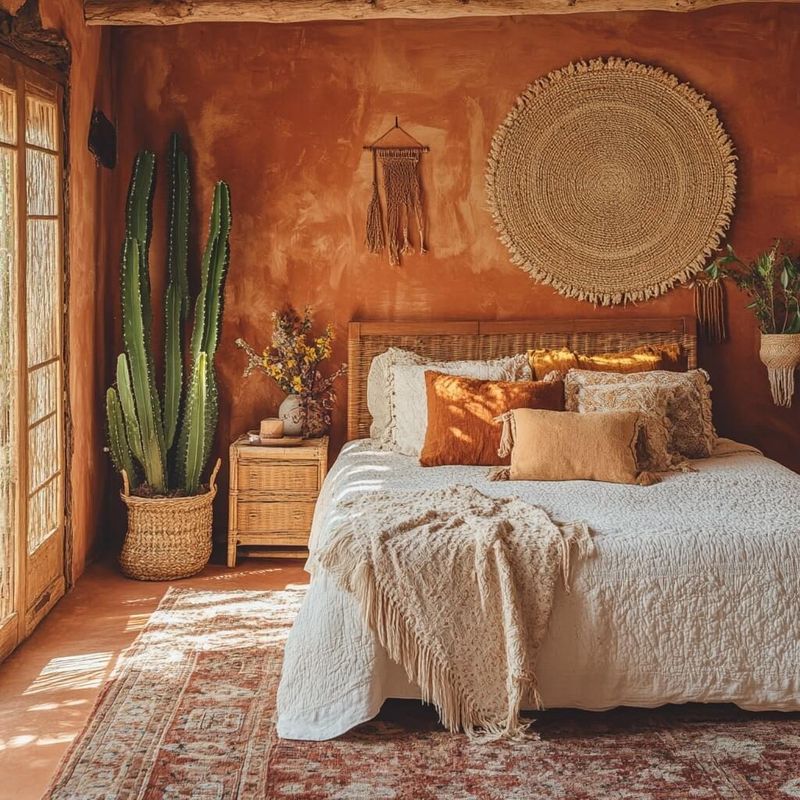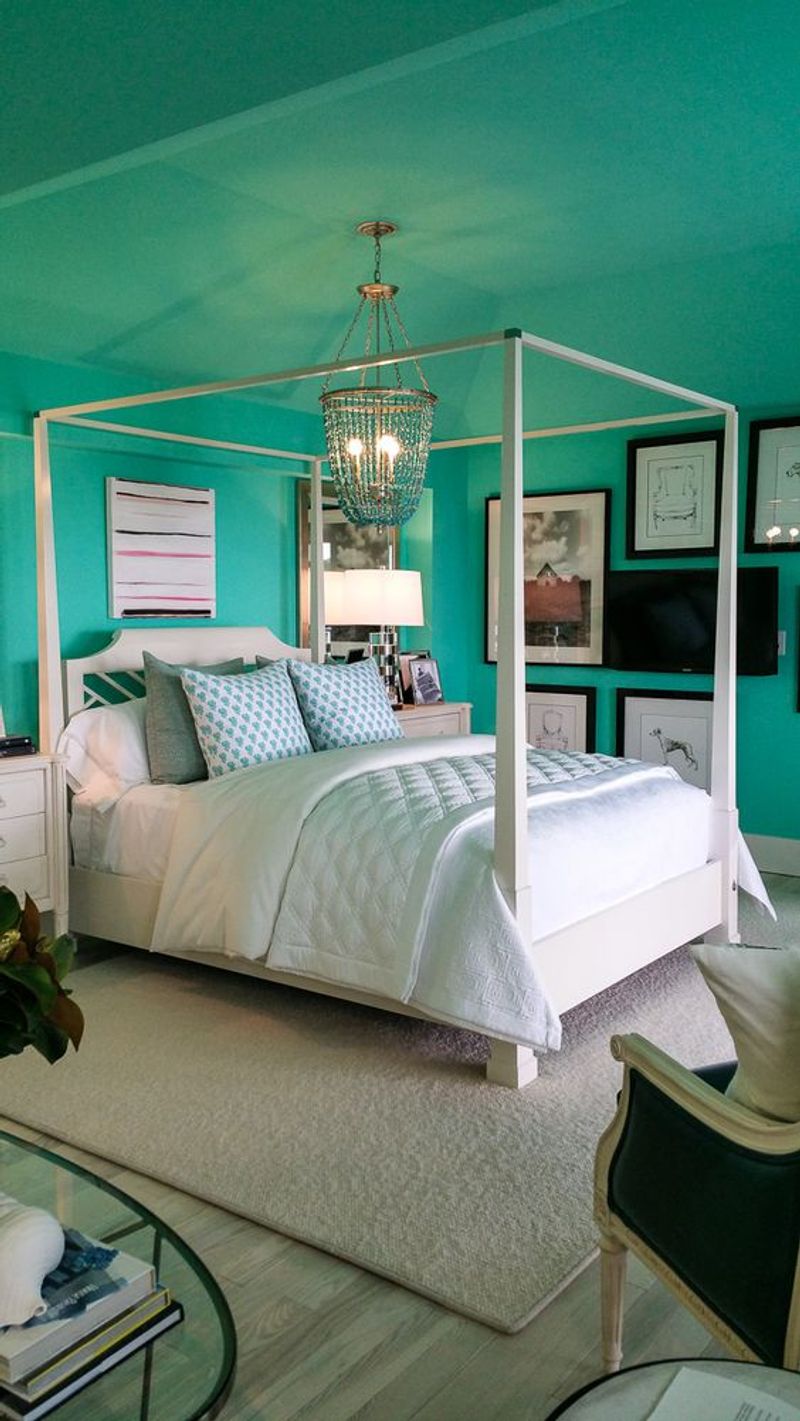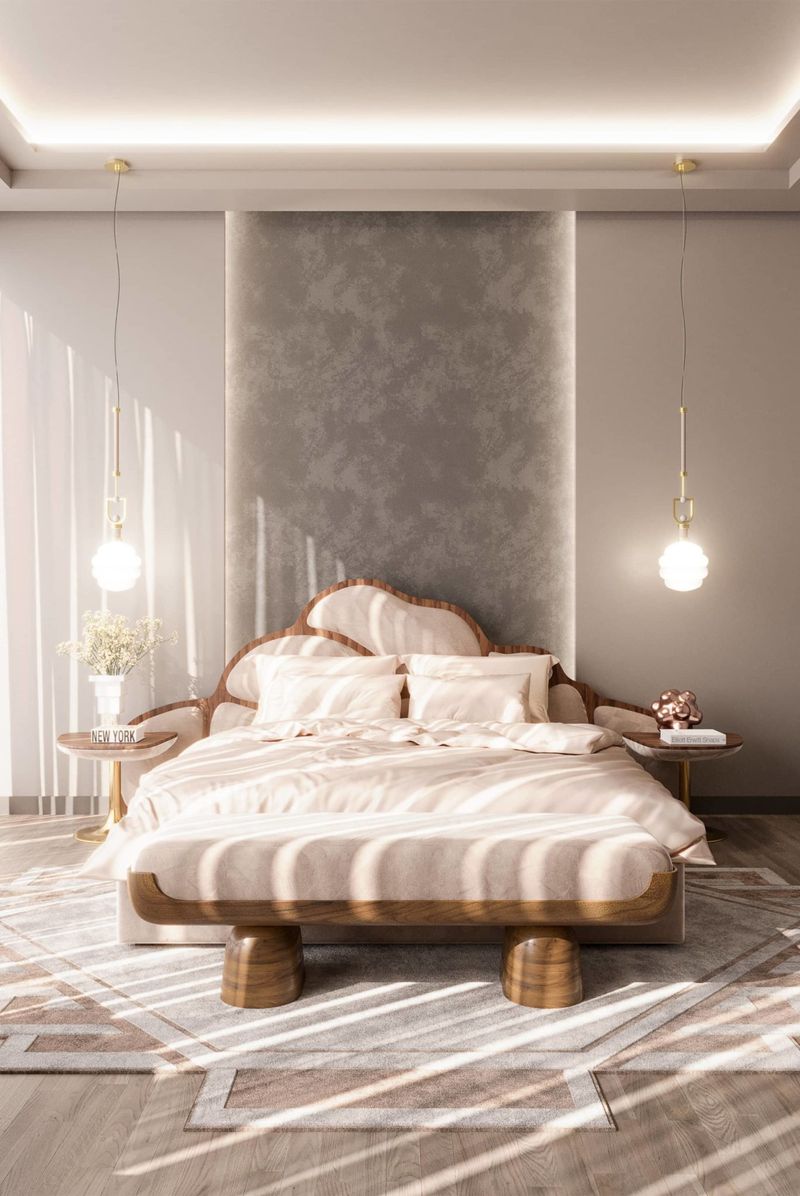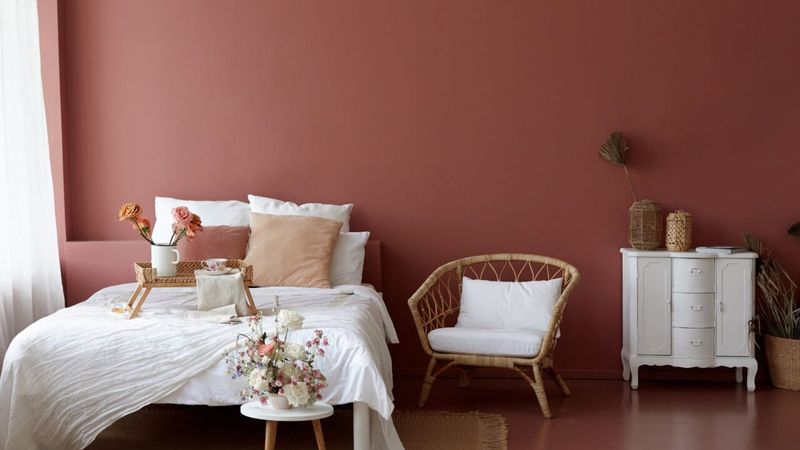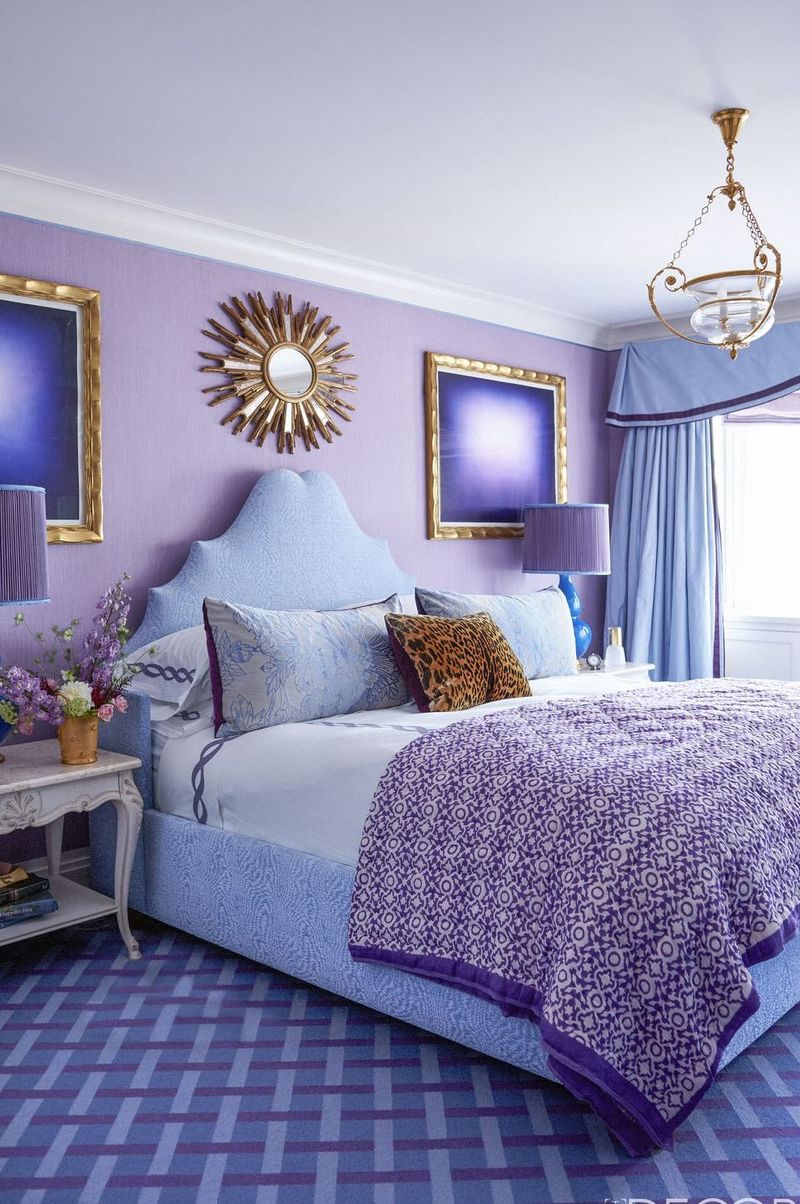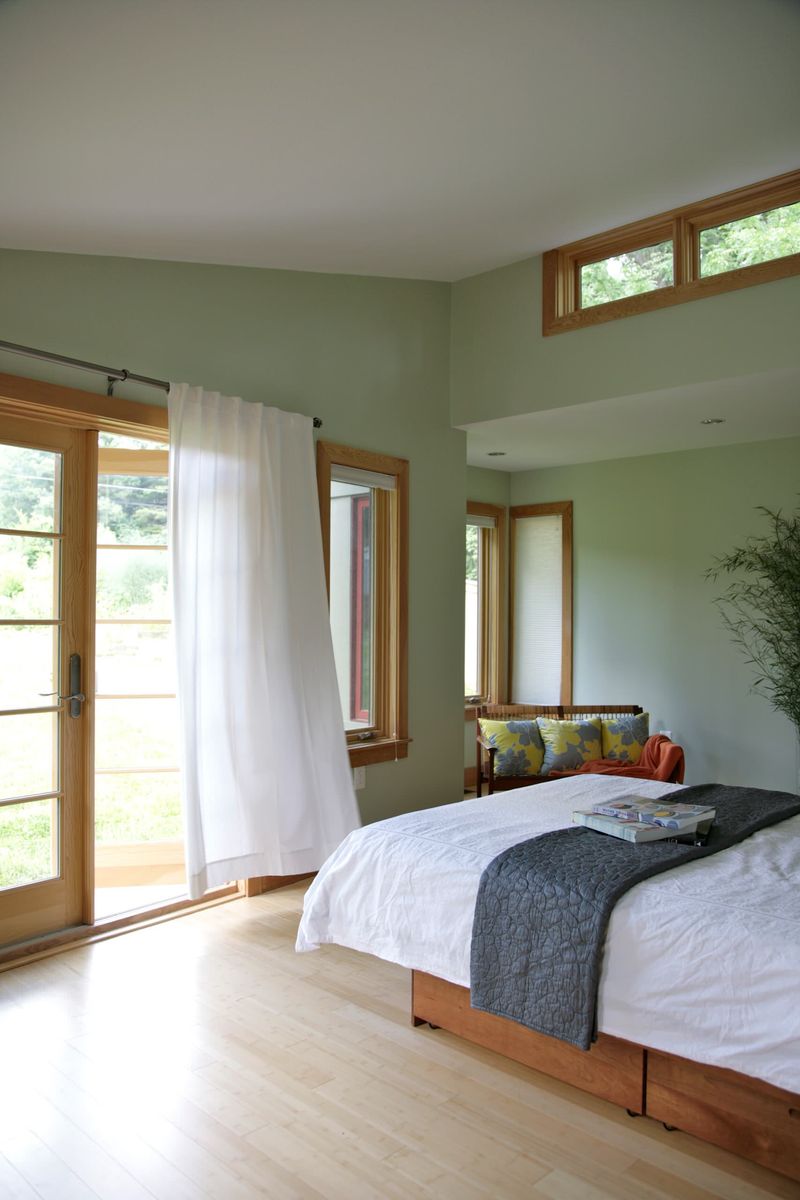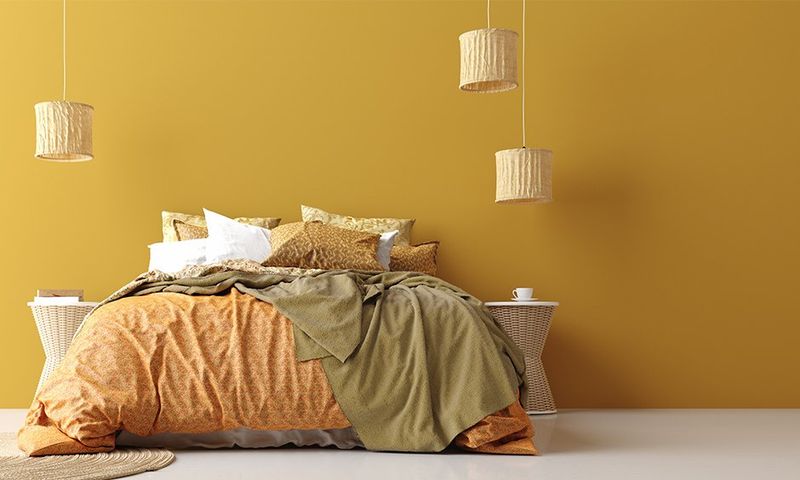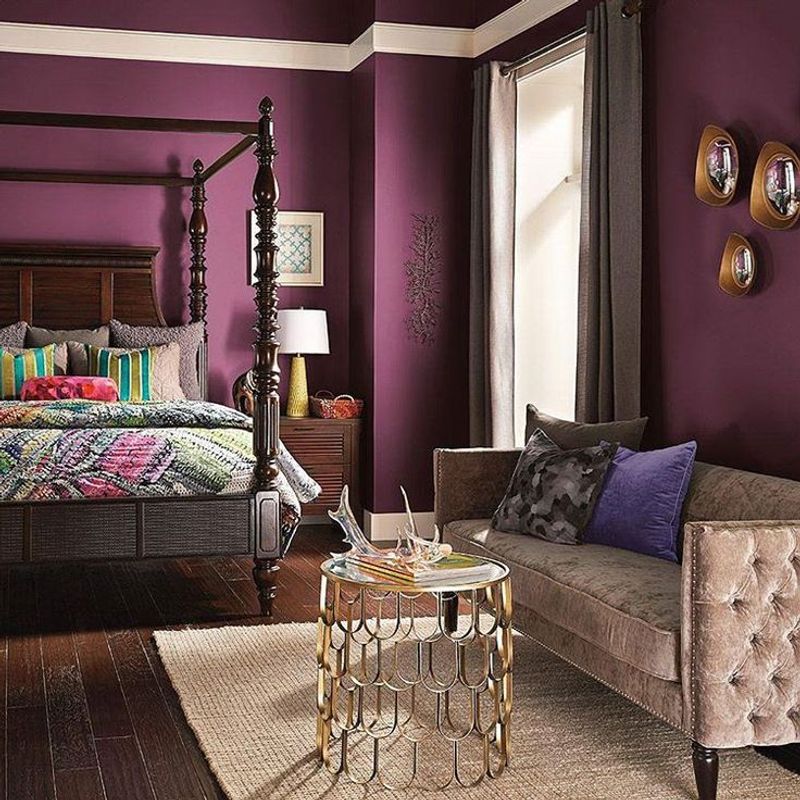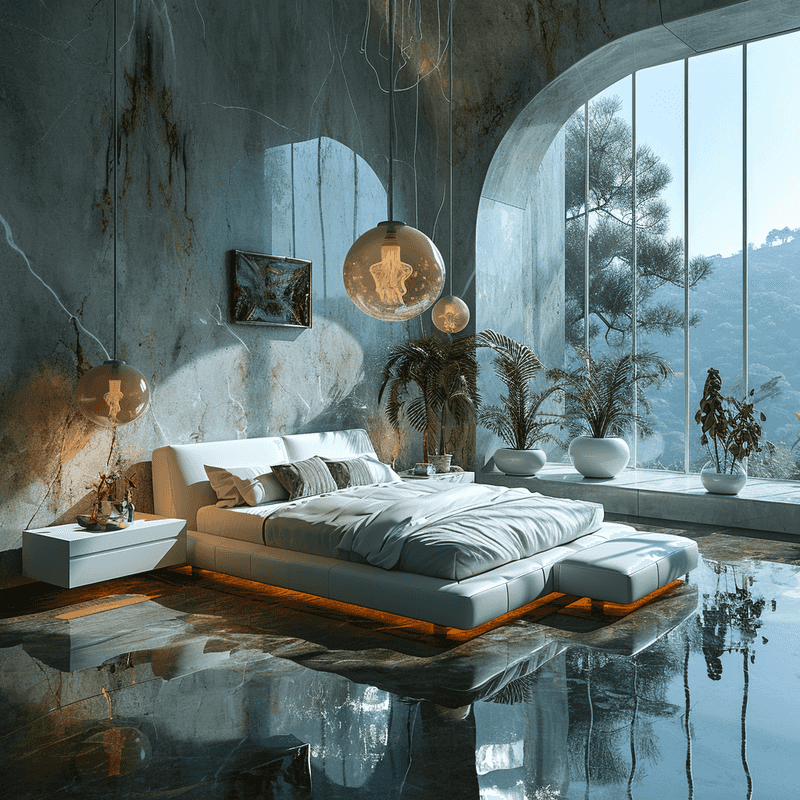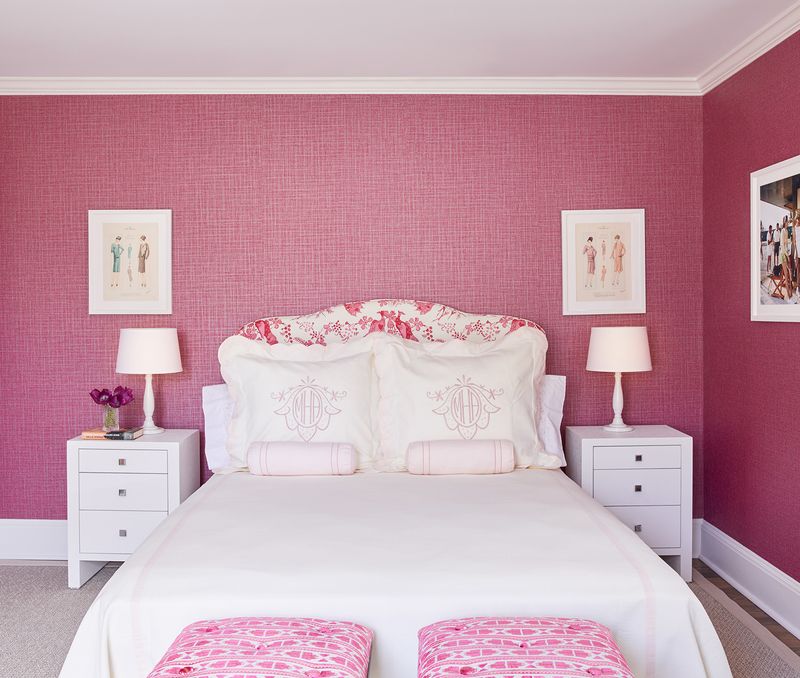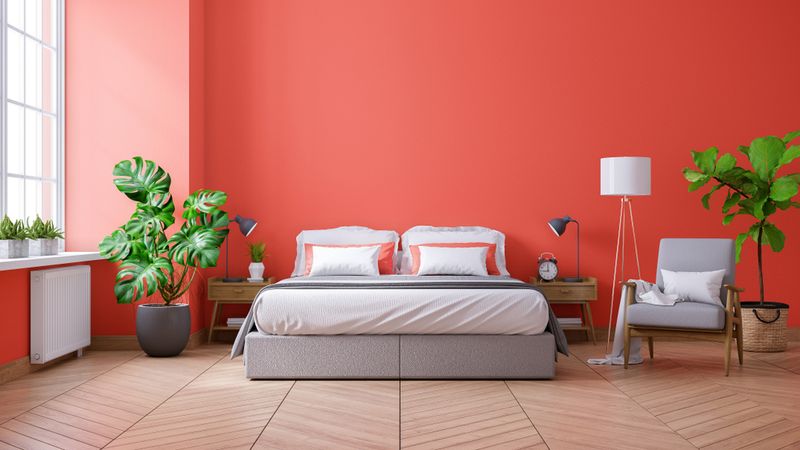Color trends come and go, and nowhere is that more obvious than in the bedroom. What once felt chic and stylish can suddenly make a space feel dated overnight.
As we move through 2025, designers are shifting away from some once-popular shades in favor of fresh, modern hues that bring new life to your retreat.
If you’re thinking about updating your bedroom, it’s smart to know which colors are fading fast – and which ones are stealing the spotlight. Here’s a look at 8 colors falling out of favor and the gorgeous shades replacing them.
1. Gray Everything
Once the darling of minimalist design, the ubiquitous gray has finally lost its crown. What started as a sophisticated neutral became so overused that designers now call it ‘the color of indecision.’
Walking into a gray bedroom in 2025 feels like stepping into a time capsule from the 2010s. The cool-toned grays especially have fallen from grace, with their clinical and sometimes depressing undertones failing to create the warm sanctuary modern bedrooms aim to be.
Homeowners are now seeking colors with more personality and emotional resonance rather than playing it safe with this formerly foolproof choice.
2. Millennial Pink
If you’re still sleeping in a bubble gum paradise, we have news for you. The once-inescapable millennial pink that dominated everything from smartphone cases to bedroom walls has finally faded into design history.
Remember when this dusty blush tone represented a cultural moment? That moment has passed. Interior designers report clients actively requesting ‘anything but that pink’ when discussing color schemes for 2025 bedroom refreshes.
The saccharine sweetness that once felt revolutionary now comes across as trying too hard to capture an Instagram aesthetic that’s no longer relevant in our more grounded design era.
3. Navy Blue Accent Walls
Wave goodbye to that navy blue accent wall behind your bed. What once seemed like a bold, sophisticated choice has become one of the most recognizable clichés in bedroom design.
The single dark wall trend reached peak saturation around 2022, appearing in countless Pinterest boards and design shows. Now in 2025, designers are embracing either full room color immersion or more creative color blocking techniques.
Many homeowners report feeling that their once-trendy navy accent wall now gives off strong ‘amateur decorator following a YouTube tutorial’ vibes rather than the luxury hotel atmosphere they were originally aiming for.
4. All-White Everything
Stark, clinical, and reminiscent of a time when we all thought minimalism meant eliminating color, the all-white bedroom has finally lost its appeal. Those pristine spaces that looked amazing in magazines but proved impossible to maintain have fallen firmly out of favor.
What was once considered timeless now reads as lacking imagination or personality. Designers in 2025 are encouraging clients to embrace warmth and character instead of the sterile white box aesthetic that dominated the early 2020s.
The pandemic-era obsession with cleanliness that boosted this trend has evolved into a desire for spaces that feel lived-in and comforting rather than antiseptic.
5. Charcoal and Black Walls
Those moody, dark bedrooms that promised sophisticated drama have left many homeowners feeling like they’re sleeping in a cave. The ultra-dark wall trend that peaked around 2021-2022 has retreated into the shadows.
Attempting to create cozy, cocoon-like spaces, many jumped on the black or charcoal bedroom bandwagon only to discover these colors make rooms feel smaller, darker, and more oppressive than expected. Morning motivation becomes particularly challenging when you wake up in what feels like midnight at 9 AM.
The maintenance factor also proved problematic, with every scuff, handprint, and dust particle showing prominently against these unforgiving dark surfaces.
6. Rose Gold and Copper Accents
The metallic fever that gripped our bedrooms has finally broken! Rose gold and copper accents that once signaled cutting-edge style have tarnished in the eyes of designers and homeowners alike.
When paired with certain wall colors (particularly the aforementioned millennial pink), these metallic tones created a signature late-2010s look that now appears as dated as avocado green appliances from the 1970s. The warm-toned metallic trend reached such saturation that it quickly transformed from fresh to formulaic.
In 2025, bedrooms featuring these distinctive rosy metals immediately timestamp a space as being decorated during that specific era of Instagram-influenced design.
7. Teal and Turquoise
Jewel-toned bedroom walls have lost their sparkle! Teal and turquoise, once considered refreshing and energetic choices for bedroom walls, have joined the ranks of colors that immediately date your home to the early 2020s.
These vibrant blue-greens dominated during a period when bold color choices were making a comeback after years of gray dominance. However, their distinctive intensity makes them instantly recognizable as belonging to a specific trend moment that has now passed.
Interior designers note that these colors often clash with changing furniture styles and create a challenging backdrop as other elements in the room evolve, making them particularly problematic as foundation colors.
8. Beige and Greige
Surprisingly, the supposedly safe choices of beige and greige (that gray-beige hybrid) have fallen from grace in 2025 bedroom design. These colors that once promised to be timeless neutrals now read as indecisive and uninspired.
After decades as the default choice for rental properties and quick home flips, these colors have developed a strong association with lack of personality and temporary living situations. The flat, often yellow-tinged versions especially have come to symbolize a reluctance to commit to actual design choices.
Homeowners now recognize that these supposedly neutral backgrounds often cast unflattering tones throughout the room, affecting everything from skin appearance to how fabric colors read.
1. Burnt Terracotta
Earthy and grounding, burnt terracotta has swept through bedroom design like wildfire. This rich, clay-inspired shade creates an instant cocoon of warmth while nodding to ancient pottery traditions.
Designers are pairing it with natural wood elements and handcrafted accessories for a look that feels both timeless and thoroughly modern. The color works especially well in spaces with lots of natural light, where it shifts beautifully throughout the day.
Many homeowners report feeling more centered and calm after switching to this earthy tone, making it perfect for our increasingly digital lives where connection to natural elements has become a luxury.
2. Digital Lavender
Straight from the tech world comes Digital Lavender, a soft yet futuristic purple that bridges natural and virtual realms. Tech companies first embraced this color for its calming properties while maintaining a forward-thinking edge.
Homeowners are now washing entire bedrooms in this hue, creating spaces that feel both soothing and slightly otherworldly. The shade pairs beautifully with brushed silver accents and minimalist furniture.
Sleep researchers have noted its potential benefits for those who struggle with screen-time-related insomnia, as the color helps transition the brain from work mode to rest. Many tech professionals specifically request this shade for their personal retreats.
3. Regenerative Green
Sprouting from our collective desire for healing comes Regenerative Green – a vibrant yet soothing shade that falls between sage and mint. Unlike the muted greens of previous years, this color pulses with life and optimism.
Bedroom walls painted in this shade create an atmosphere of growth and renewal. The color has particularly gained popularity among urban dwellers seeking to bring elements of nature into limited spaces.
Designers recommend pairing it with sustainable materials like bamboo furniture and organic cotton bedding. The psychological benefits extend beyond aesthetics – many report feeling more energized in the morning and more peaceful at night when surrounded by this revitalizing hue.
4. Nostalgic Marigold
Radiating warmth and vintage charm, Nostalgic Marigold has captured hearts with its sunny disposition and emotional depth. This golden-yellow hue evokes memories of childhood summers while feeling surprisingly contemporary.
Paint companies report unprecedented demand for this shade, especially among millennials and Gen-Z decorators seeking comfort in uncertain times. The color works magic in north-facing rooms, creating the illusion of perpetual sunshine.
Designers are pairing it with vintage furnishings and handmade textiles for maximum impact. Beyond its visual appeal, this color has been linked to increased morning energy and improved mood – making it a functional choice for those who struggle with seasonal affective disorder.
5. Cosmic Aubergine
Mysterious and luxurious, Cosmic Aubergine has emerged as 2025’s answer to the bold wall trend. This deep purple with subtle blue undertones creates an expansive feeling reminiscent of night skies and infinite possibilities.
High-end hotels pioneered this trend, and homeowners quickly followed suit. The color creates a perfect backdrop for statement art pieces and metallic accents.
Sleep experts have noted its effectiveness in creating environments conducive to deep sleep, particularly for those living in bright urban environments. The color absorbs light rather than reflects it, making it easier to maintain darkness for quality rest.
6. Biophilic Blue
Emerging from our deepening relationship with nature, Biophilic Blue mimics the varied blues found in natural water sources. This multi-dimensional color shifts subtly throughout the day, appearing more aqua in morning light and deeper azure by evening.
Paint companies have developed special formulations that incorporate subtle shimmer elements to enhance this water-like quality. The color has proven especially popular in drought-prone regions where residents seek visual connection to water.
Studies suggest rooms painted in this shade can lower heart rates and blood pressure, making it ideal for bedrooms. Designers recommend pairing it with natural wood tones and living plants to complete the biophilic effect that’s become central to 2025’s design philosophy.
7. Fermented Raspberry
Bold yet sophisticated, Fermented Raspberry brings unexpected depth to bedrooms. This complex pink has undertones of burgundy and brown, creating a mature alternative to previous pink trends while maintaining warmth and character.
Culinary trends directly influenced this color’s popularity, with interior designers drawing inspiration from natural food dyes and fermentation processes. The shade works beautifully in both traditional and contemporary spaces.
Many homeowners report feeling both energized and comforted by this color – a rare combination that makes it particularly well-suited for bedroom spaces. Designers suggest pairing it with cream textiles and brass accents to enhance its rich character. Unlike previous pink trends, this shade appeals equally to all genders and age groups.
8. Sunset Coral
Sunset Coral invites you into a warm embrace, akin to the gentle glow of a setting sun. This color radiates comfort and creativity, making it an ideal choice for those who seek tranquility with a dash of inspiration.
The subtle blush undertones of Sunset Coral are versatile, pairing beautifully with natural materials like wood and linen. This choice adds a layer of sophistication without overwhelming the senses, creating a balanced and inviting environment.
Embracing this hue transforms any bedroom into a sanctuary that echoes peace and artistic flair, providing a refreshing departure from more conventional color choices.

